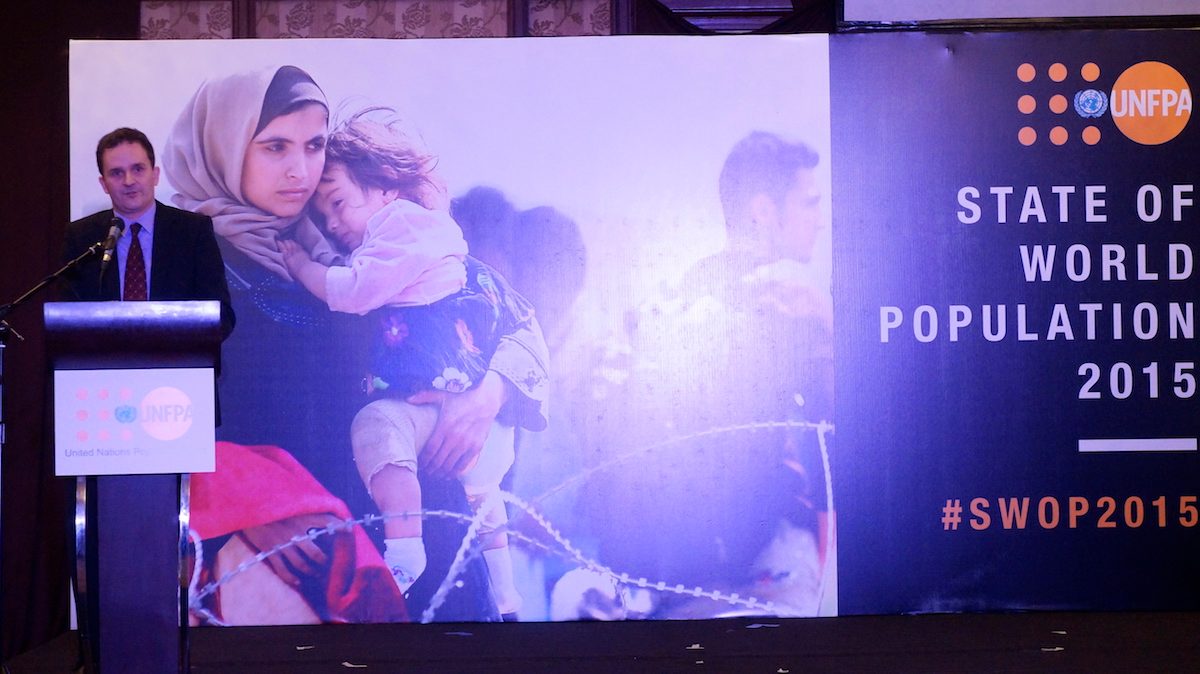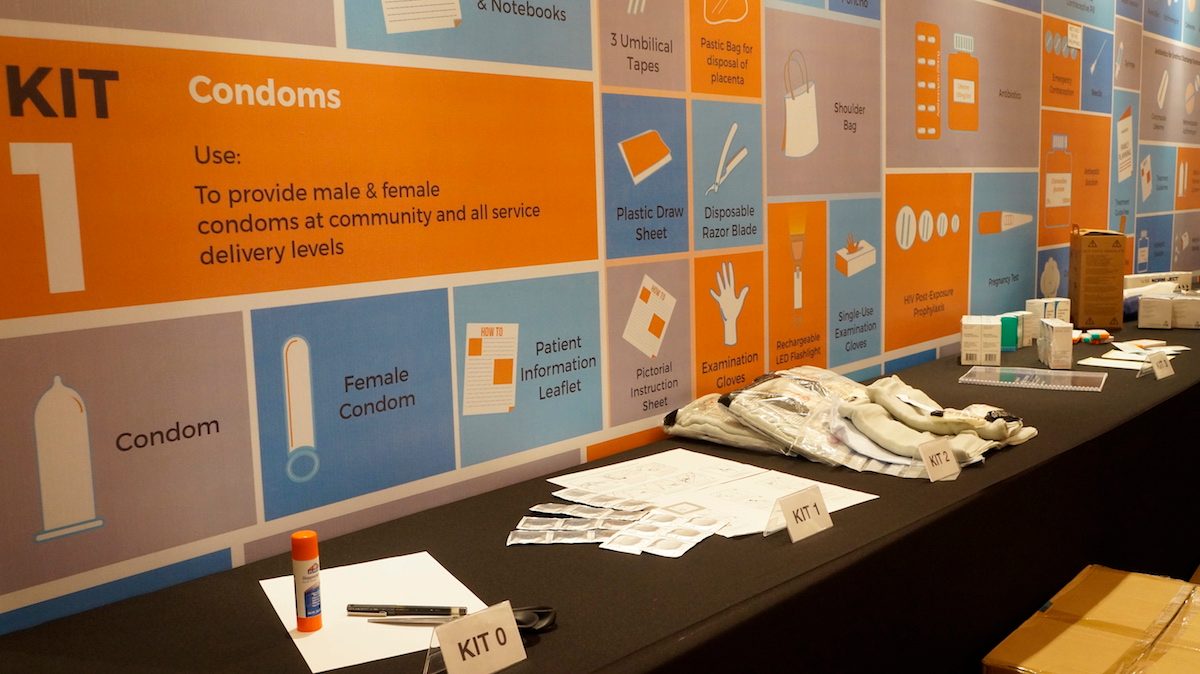SUMMARY
This is AI generated summarization, which may have errors. For context, always refer to the full article.

MANILA, Philippines – The United Nations Population Fund’s (UNFPA) recent report, “State of World Population (SWOP) 2015,” revealed an unfortunate fact: the most fragile countries are at the greatest risk to disasters and conflicts.
Even without disasters, inequality has prevented 1 billion people from enjoying post-World War II growth. But when disasters come into the picture, data showed 100 million lives worsened in 2015 alone.
Eliminating inequality and addressing the needs of vulnerable communities have thus become priorities for the UNFPA. (Missed the launch of the State of World Population Report? Read about what happened in the event blog)
Recently, the Philippines has experienced several disasters that affected poverty-stricken regions in the country. Small islands, for example, are some of poorest communities and are also extremely vulnerable. (READ: IN NUMBERS: 2 years after Typhoon Yolanda)
Greater risk for women, young girls
Disasters and conflicts affect most the marginalized within communities. Women and children, in particular, face added dangers during crises.
“It is a plain and simple truth that disasters reinforce, perpetuate, and increase gender inequality,” said Margaretha Wahlström, Special Representative of the Secretary-General for Disaster Risk Reduction.

The numbers prove her point: out of the 100 million people in need of humanitarian aid, 25% were women and girls of reproductive age, or 15-49 years old. Although disasters result in the breakdown of medical and reproductive health infrastructure and services – people’s sexual activities continue in disaster and conflict areas.
“Everyday, 507 women and young girls die from complications of pregnancy and childbirth in emergency situations,” said Ron Villas, the Humanitarian Coordinator of the UNFPA Philippine office.
With the breakdown of facilities, many women fall victim to unsafe childbirth and abortions. The lack of medical care has also resulted in an increase in the cases of sexually transmitted diseases, including HIV.
When emergency response does come, it tends to only cater to the general needs like food, water, and first aid. Villas said emergency situations affect all sectors of society; but women and young girls have specific needs that are sometimes overlooked. (READ: Beyond food and shelter: Protecting women and girls in times of crisis)
Gender-based violence
After Super Typhoon Yolanda (Haiyan), more than half of Leyte’s 52 reproductive health facilities were damaged. Midwives and other healthcare workers were also affected, and those that could help had to do so lacking the necessary tools.
Hundreds of pregnant women, according to the Report, had to face “potentially life-threatening complications.”
Alarmingly, disaster and conflict situations are breeding grounds for gender-based violence (GBV). The UNFPA described gender-based violence as “part of a continuum that women and girls experience in their every day lives but can become more prevalent in crises.”
Achieving resiliency

“People have to realize that addressing the needs of populations affected by emergencies, both man-made and natural, is crucial,” Villas said. But addressing these needs by simply focusing on response activities is no longer enough – in fact, it’s unsustainable.
Although humanitarian assistance totaled a record-setting $24.5 billion in 2014 (a 19.5% increase from 2013’s $20.5 billion), the UNFPA cited a study saying “international humanitarian assistance alone has not kept pace with the rising needs and increasing complexity of today’s humanitarian crises.”
So what needs to be done?
Instead of rebuilding a community, the UNFPA suggested building a better and more sustainable one. A resilient community, one that is best able to mitigate the effects of disasters, is one without poverty and inequality, which the UNFPA considers the causes of vulnerability.
Those at the greatest risk, women and girls especially, must be protected and empowered, according to the report.
Targeting the needs of women and children means having gender-appropriate programs that would address their differentiated needs. In terms of response, Villas recommended pre-positioning the necessary kits in local government units for the women’s medical and reproductive health.
Implementing solutions beyond response means putting in place the necessary preparations.
Klaus Beck, UNFPA Philippine Country Representative, believes this can be done by preparing at two levels: first, countries must have the systems and structures in place to make disaster response more effective; and, families must be aware of the steps they need to take during emergencies. (READ: The role of LGUs, local councils during disasters)
A resilient society is also one that is comprised of empowered members. By educating young girls, countries can begin building local communities equipped with the skills needed to address disasters and conflicts and contribute to planning disaster mitigation strategies. Women also become more active participants in disaster planning and recovery when given the chance. (READ: Women are key in tackling disaster – UN officials)
In spite of the challenges, Villas reamains optimistic about the future. But, he also said action in the form of plans, benchmarks, and timetables had to be in place for optimism to have any meaning. “Optimism is never enough,” he concluded.
Survivors
Three survivors of Super Typhoon Yolanda, Yolanda Cantos, Felicita Esperas, and Joy Abuyabor, belong to a group dedicated to assisting women who needed a safe space. The group saw the need for women-friendly spaces because they saw and heard stories of women feeling hopeless after the storm.
Today, the three said the women they were helping said they now have a heightened sense of self-esteem. They carried themselves better and were more outspoken about issues that affected them. Cantos, Esperas, and Abuyabor’s experience helping women empowered them too. They joked during a panel discussion, “Before, we wouldn’t speak in English, now look at us!” – Rappler.com
Add a comment
How does this make you feel?
There are no comments yet. Add your comment to start the conversation.